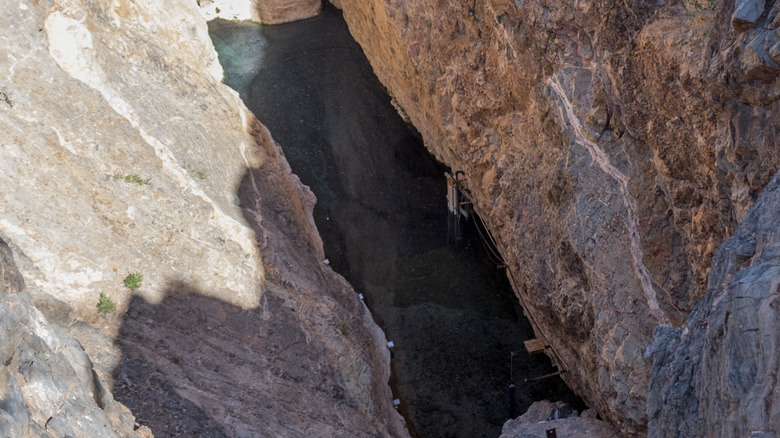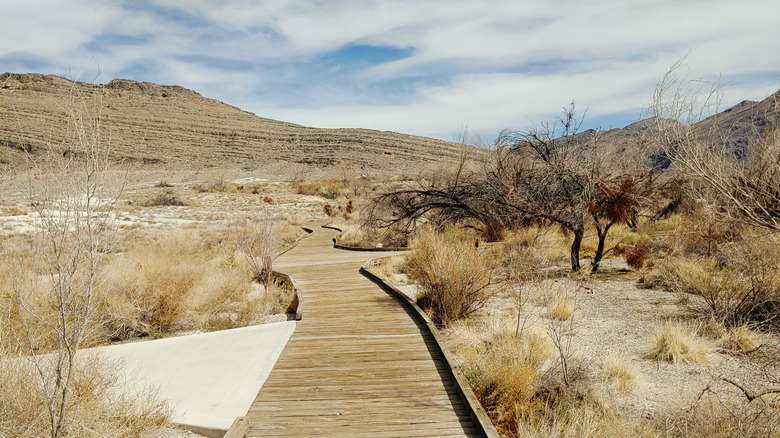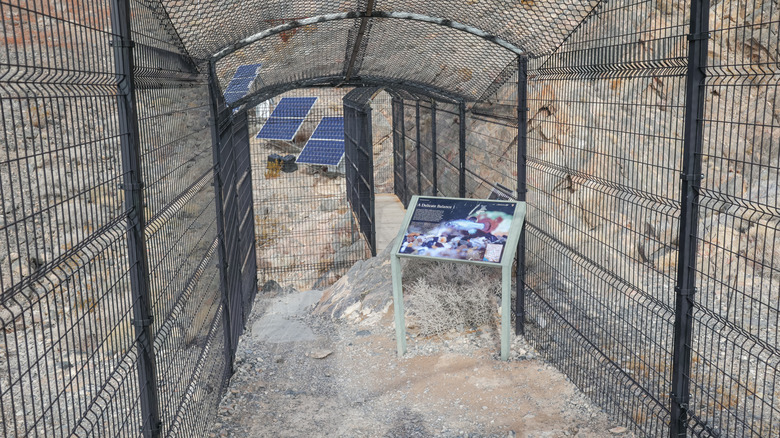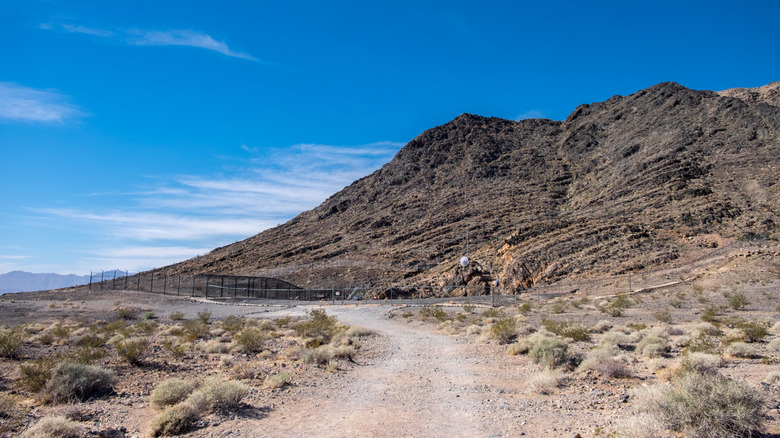Nevada's Hidden Desert Sinkhole Holds Ancient Marvels And Is Home To The World's Rarest Fish
A geothermal pool in the middle of the desert, home to the world's rarest fish — sounds like something straight out of a sci-fi movie. But in the otherworldly state of Nevada, where places like Area 51 only fuel one's imagination, anything seems possible. Hidden within the Ash Meadows National Wildlife Refuge — which is part of the record-breaking Death Valley National Park — lies the Devils Hole. And yes, this is where you give the devil his due. It's an incredible sight with an air of mystery you can't help but admire and question in equal measure.
Devils Hole is an enigma, to say the least. People have been trying to make sense of this desert opening for ages. What looks like a small gap in the rock actually drops 30 feet to a hot water pool on a limestone shelf. Beneath the surface, there's a network of tunnels that expand into caverns, with even more peculiar features. We still don't know how deep this cave goes. In 1991, USGS divers descended 436 feet into the hole, but they didn't reach its deepest point — the most anyone has gone is 500 feet. And due to several accidents, the site is now secured by cameras and a fence.
How to get to Devils Hole
Just because Devils Hole is a protected area doesn't mean you can't visit it. If you've escaped the hustle and bustle of Las Vegas and found yourself in the under-the-radar town of Pahrump, you're only 40 minutes away — simply drive along Bell Vista Avenue and you'll get there before you know it. For those coming from farther away, like Laughlin — a cheap, relaxed alternative to Vegas' crowds — the journey takes a bit longer. It's about a three-hour drive, but at least you get a glimpse of Sin City before heading back into the quiet desert.
The oddities don't stop when you arrive at Devils Hole. Would you believe that earthquakes happening on the other side of the world actually affect the pool here? The caves, formed over 500,000 years ago, are influenced by seismic activity. Earthquakes in Japan, Indonesia, Mexico, and Chile send out waves, like mini tsunamis, that ripple across the desert. It's just one more way this place keeps you guessing.
The Devils Hole pupfish is the only native species
Devils Hole has a unique resident: its namesake pupfish, the rarest of its kind in the world. This tiny fish thrives in the scorching, low-oxygen waters — an environment where most creatures couldn't survive. For tens of thousands of years, this pupfish has been the sole inhabitant of Devils Hole. It has adapted to the consistent 92-degree Fahrenheit temperature and stable water conditions, which has allowed it to survive where other species might struggle.
@huckoutdoorsfromyt Exploring Devil's Hole: Secrets of the Endangered Pupfish #DevilsHolePupfish #DeathValleyWildlife #EndangeredSpecies #AquaticLife #ConservationHeroes #DesertEcosystem #NationalParkAdventure #WildlifeConservation #ExploreNature #TinyWonder #Biodiversity #RareSpecies #UniqueEcosystem #ProtectOurParks #NatureIsAmazing #DeathValleyNationalPark #DVNP #rarefish
The population of the fish ranges between 100 to 200 in winter and 300 to 500 in summer, mainly influenced by the hole's algae growth. Since being officially listed as endangered in 1967, the pupfish has faced a dramatic loss in numbers, and no one knows exactly what's causing it. Despite the uncertainty, scientists continue to study the ecosystem, water chemistry, and even the pupfish's genetics in hopes of saving the species that has survived for millennia.
Tips for visiting Devils Hole
Since Devils Hole is in a specific section of Ash Meadows, take your time walking the trails and find more hidden pools where other pupfish live in a harsh but fascinating environment. The entire landscape here is full of scenic beauty, with striking geological formations that give you a sense of its past. Have a digital camera with you to keep your photos sharp to capture the vast desert. Keep an eye out for birds and wildlife as you trek, and for a closer look at the famous Devils Hole pupfish, make your way to the viewing platform. Don't forget your binoculars either — you definitely want to get a better view of these blue fish.
Be mindful of the space and wildlife around you, too; leave only footprints behind. And remember, you're in the desert, so plan on going when the sun isn't at its hottest. Head out in the morning or late afternoon to catch the best light and enjoy cooler temperatures. When you've had your fill of the desert, you can always head to Mount Charleston, a serene and breathtaking day trip that's an hour and 40 minutes away.



